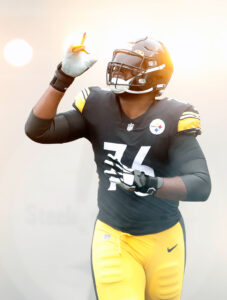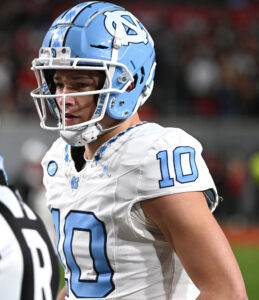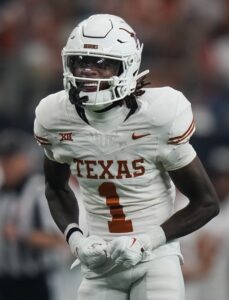With Trent Brown no longer in the fold, the Patriots will have a new left tackle starter in 2024. Neither of the team’s top options to replace him have NFL experience on the blindside, though, leaving open the question of a free agent addition. 
Chukwuma Okorafor has been taking the majority of first-team reps during OTAs, and that will likely continue through the summer. The former Steelers third-rounder has 59 NFL starts to his name, but his last action on the blindside came in college. Third-round rookie Caedan Wallace is also a candidate for the left tackle gig, but his Penn State tenure consisted of playing on the right side.
Head coach Jerod Mayo noted that both newcomers are seeing time at multiple spots as the team works out its plan up front. He made it clear, though, that moving Michael Onwenu from right tackle to the blindside is not under consideration. Onwenu re-signed on a three-year, $57MM deal this offseason and he will remain a key member of New England’s O-line regardless of who winds up winning the first-team spot opposite him.
“I mean, I think, look, we’re always trying to bring in good players,” Mayo said when asked about the possibility of an outside addition (via Doug Kyed of the Boston Herald). “Those guys are doing well. We’ll see what happens as the roster continues to play out. Realistically, we’re still early in the process, and training camp will reveal a lot.”
Indeed, evaluations of players on both sides of the line of scrimmage is challenging in the non-padded practices of OTAs and minicamp. More will be known about Okorafor, Wallace and former UDFA Calvin Anderson with respect to their blindside viability this summer. If it is deemed necessary, the Patriots could explore adding a veteran such as David Bakhtiari, D.J. Humphries, Donovan Smith or Charles Leno.
Each of those linemen remain on the open market well after the initial waves of free agency and the draft, and they should be available on a low-cost deal for New England or any other interested teams. The Patriots currently have the most cap space in the league with over $46MM available, so funds would not be an issue if a left tackle move was pursued. It will be interesting to see if that winds up being the case later on, or if they elect to stay in house at the position.

